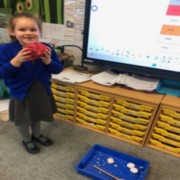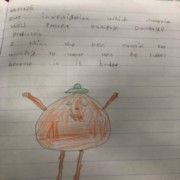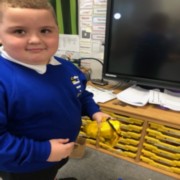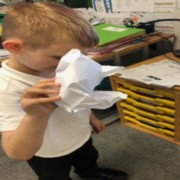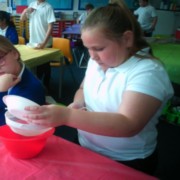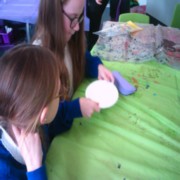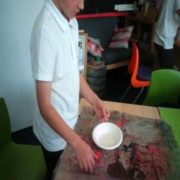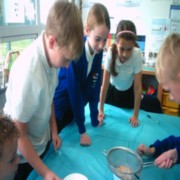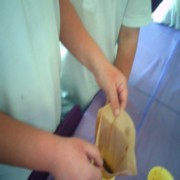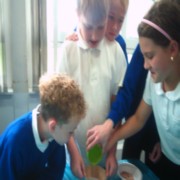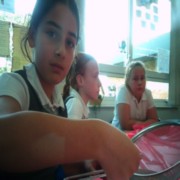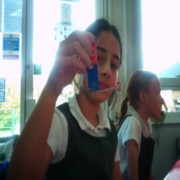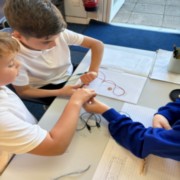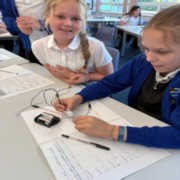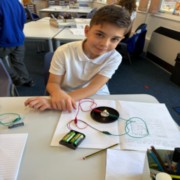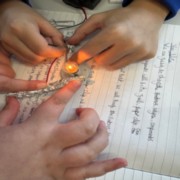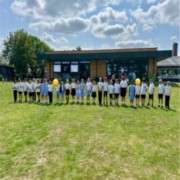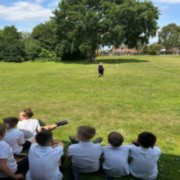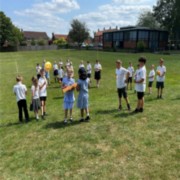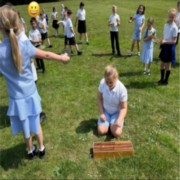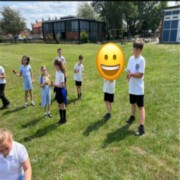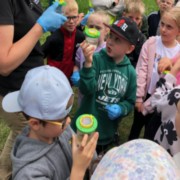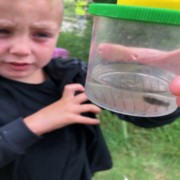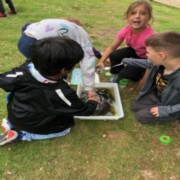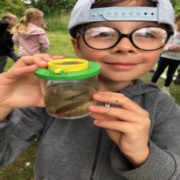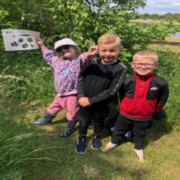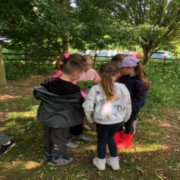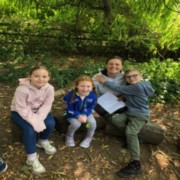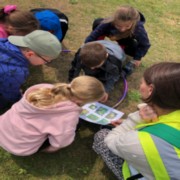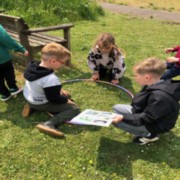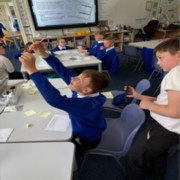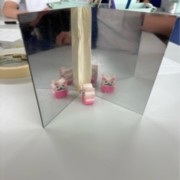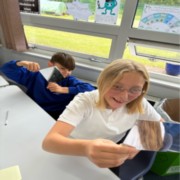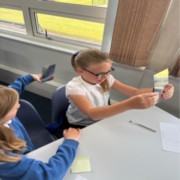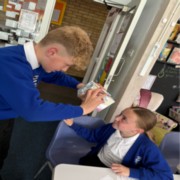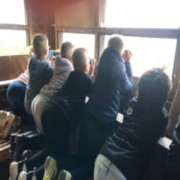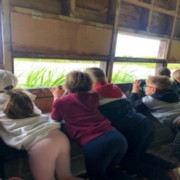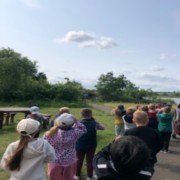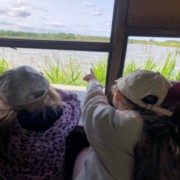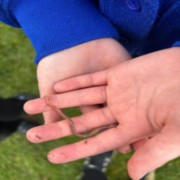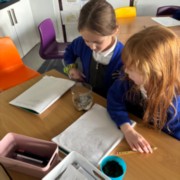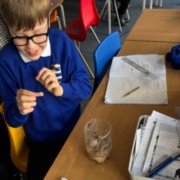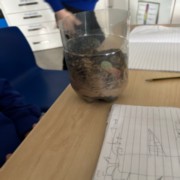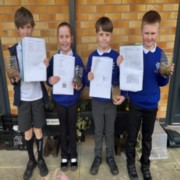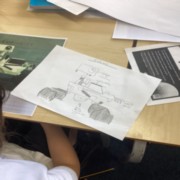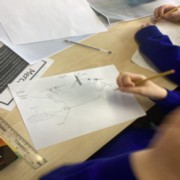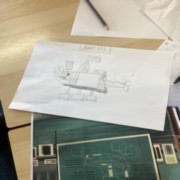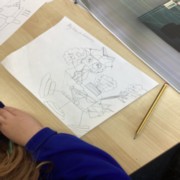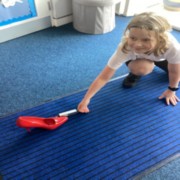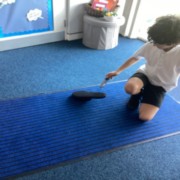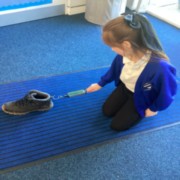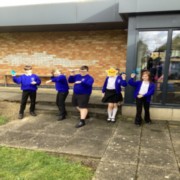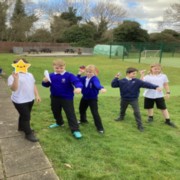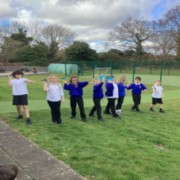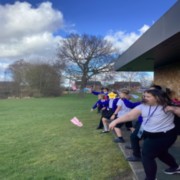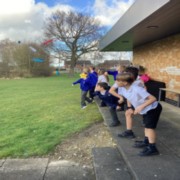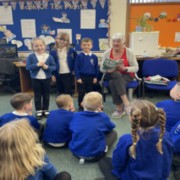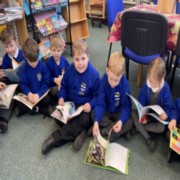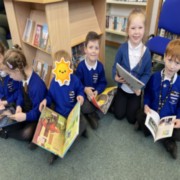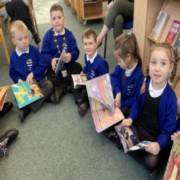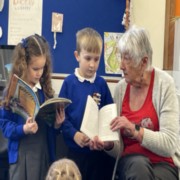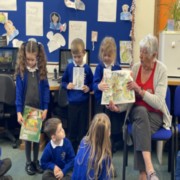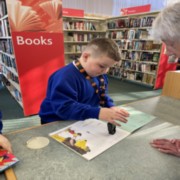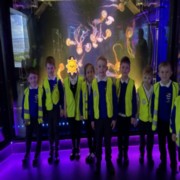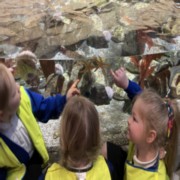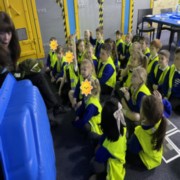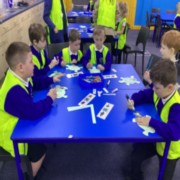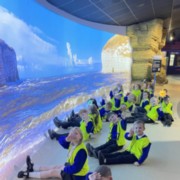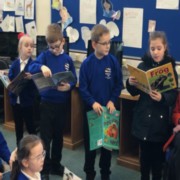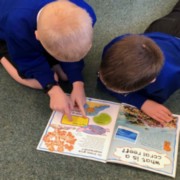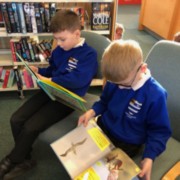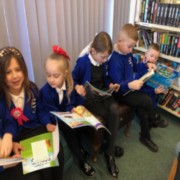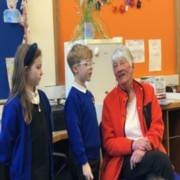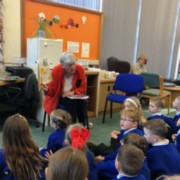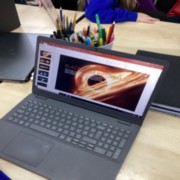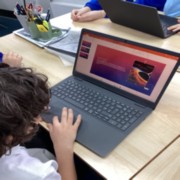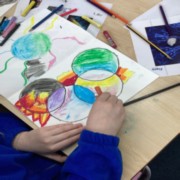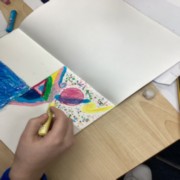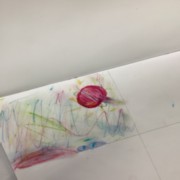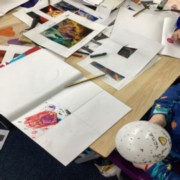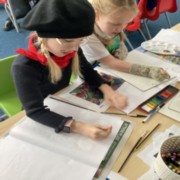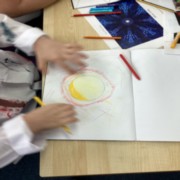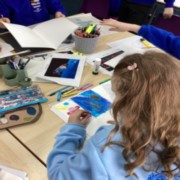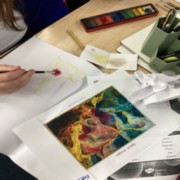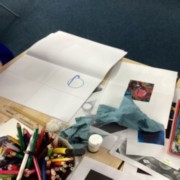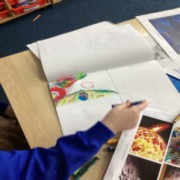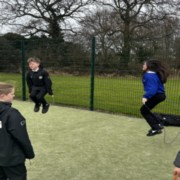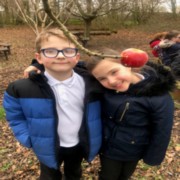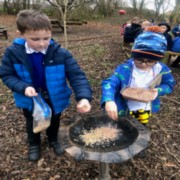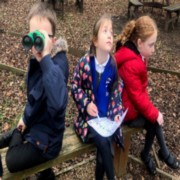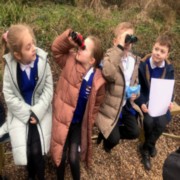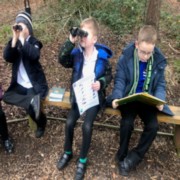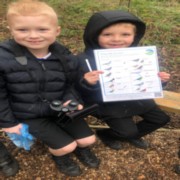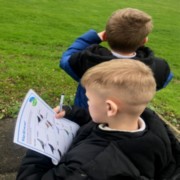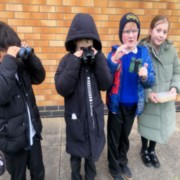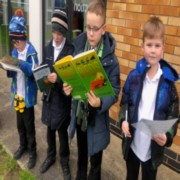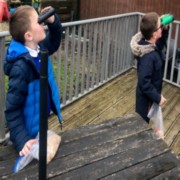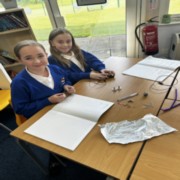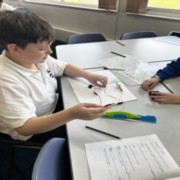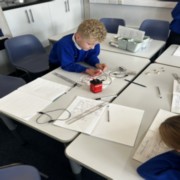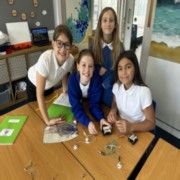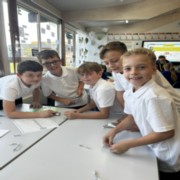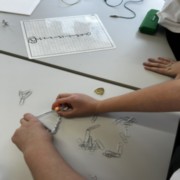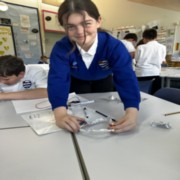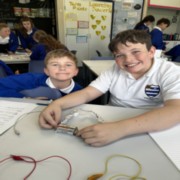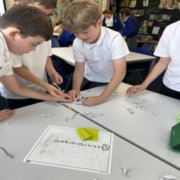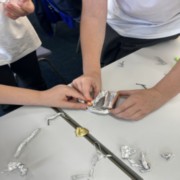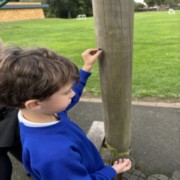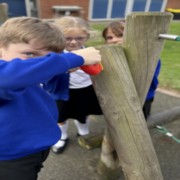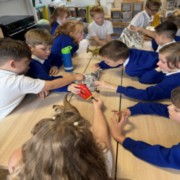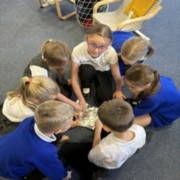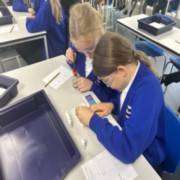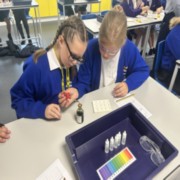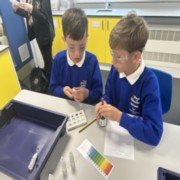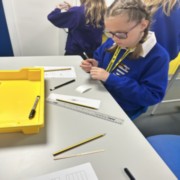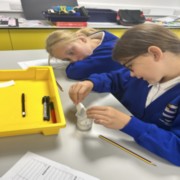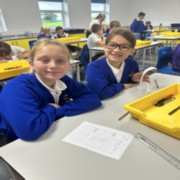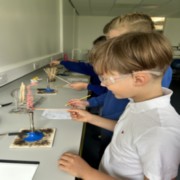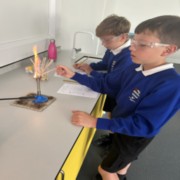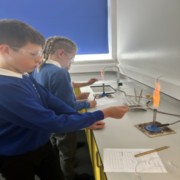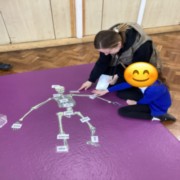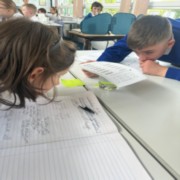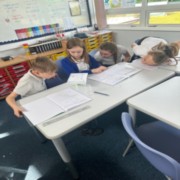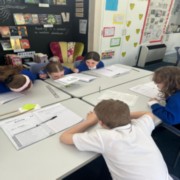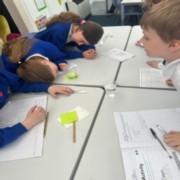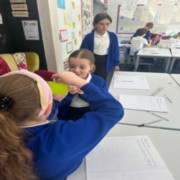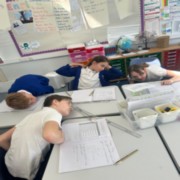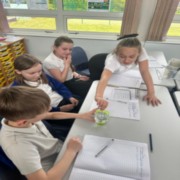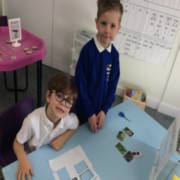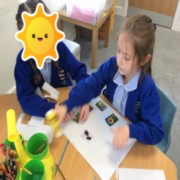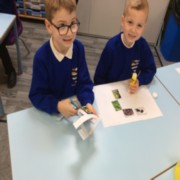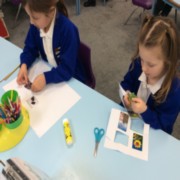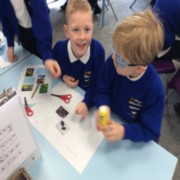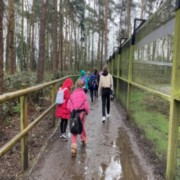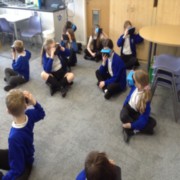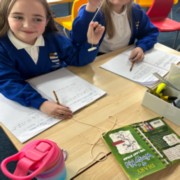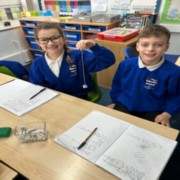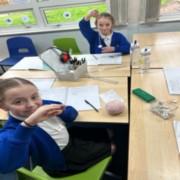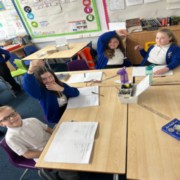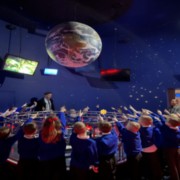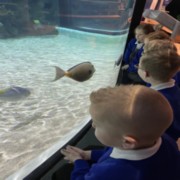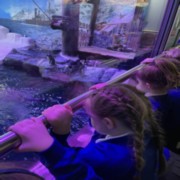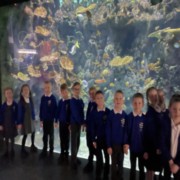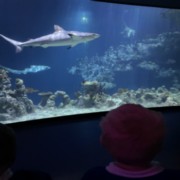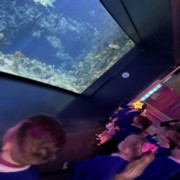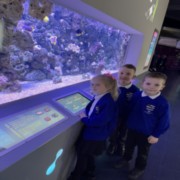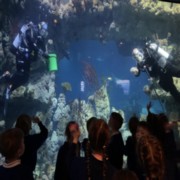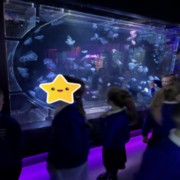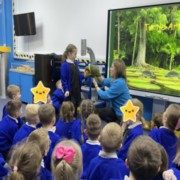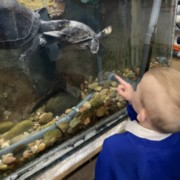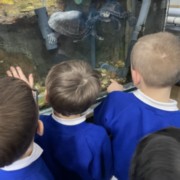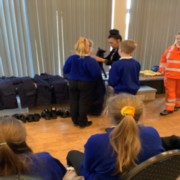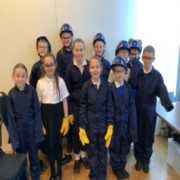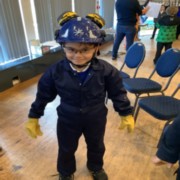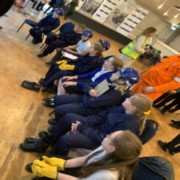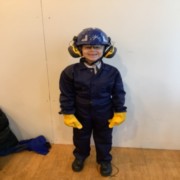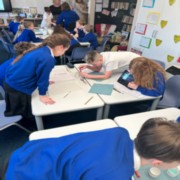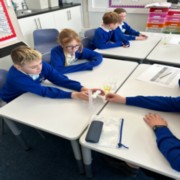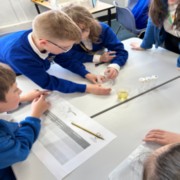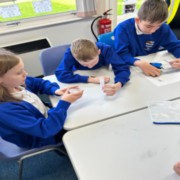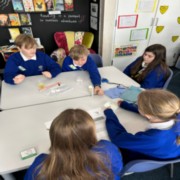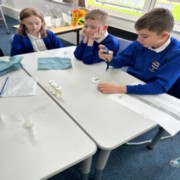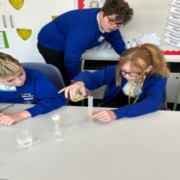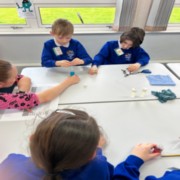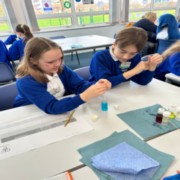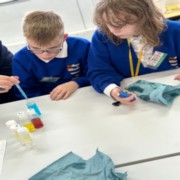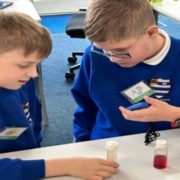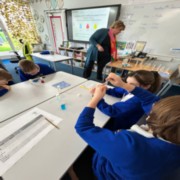Science
The Intent, Implementation and Impact of our Curriculum – Science
Laceby Stanford Primary Academy understands the need for all pupils to develop their Scientific ability as an essential component of all subjects and as a subject in its own right. A good understanding of scientific knowledge and conceptual understanding helps to support pupils work across the curriculum.
Intent
At Laceby Stanford Primary Academy we believe that a high quality science education provides the foundations for understanding the world through the specific disciplines of biology, chemistry and physics. Science has changed our lives and is vital to the world’s future prosperity, and all pupils should be taught essential aspects of the knowledge, methods, processes and uses of science. Through building up a body of key foundational knowledge and concepts, pupils should be encouraged to recognise the power of rational explanation and develop a sense of excitement and curiosity about natural phenomena. They should be encouraged to understand how science can be used to explain what is occurring, predict how things will behave, and analyse causes.
Science in our school is about developing children’s ideas and ways of working that enable them to make sense of the world in which they live through investigation, as well as using and applying process skills. The staffs at Laceby Stanford Primary Academy insure that all children are exposed to high quality teaching and learning experiences, which allow children to explore their outdoor environment and locality, thus developing their scientific enquiry and investigative skills. They are immersed in scientific vocabulary, which aids children’s knowledge and understanding not only of the topic they are studying, but of the world around them. We intend to provide all children regardless of ethnic origin, gender, class, aptitude or disability, with a broad and balanced science curriculum.
Implementation
In ensuring high standards of teaching and learning in science, we implement a curriculum that is progressive throughout the whole school.
Planning for science is a process in which all teachers are involved to ensure that the school gives full coverage of, ‘The National Curriculum programmes of study for Science 2014’ and, ‘Understanding of the World’ in the Early Years Foundation Stage. Science teaching at Laceby Stanford Primary Academy involves adapting and extending the curriculum to match all pupils’ needs. Where possible, Science is linked to class themes. Science is taught as discrete units to ensure coverage. Due to one form year groups in our school, Science units are taught on a year rolling programme. This ensures progression between year groups and guarantees topics are covered. Teachers plan to suit their children’s interests, current events, their own teaching style, the use of any support staff and the resources available.
As part of the planning process teachers need to plan the following:
- A knowledge organiser which outlines knowledge (including vocabulary) all children must master.
- A cycle of lessons for each subject which carefully plans for progression and depth.
- Encourage open-mindedness, self-assessment, perseverance, and developing skills of investigation-including: observing, measuring, predicting, hypothesising, experimenting, communicating, interpreting, explaining and evaluating.
- A diagnostic assessment at the beginning of each new unit and at the end to support learners’ ability to block learning.
- Develop the use of scientific language and recording.
- Making links between science and other subjects.
- Trips and visits from experts who will enhance the learning experience.
Science is taught consistently, once a week for up to two hours, but is discretely taught in many different contexts throughout all areas of the curriculum.
At Laceby Stanford Primary Academy we aspire to promote children’s independence and for all children to take responsibility in their own learning, therefore we have implemented self/teacher assessment sheets, which the children use as a working document to track their achievements and progress throughout a topic.
Impact
The impact and measure of this is to ensure children not only acquire the appropriate age related knowledge linked to the science curriculum, but also skills which equip them to progress from their starting points, and within their everyday lives.
All children will have:
A wider variety of skills linked to scientific knowledge and understanding, and scientific enquiry/investigative skills.
A richer vocabulary which will enable to articulate their understanding of taught concepts.
High aspirations, which will see them through to further study, work and a successful adult life
A parents guide to the new National Curriculum (not Foundation/Seedlngs class). More information can be found on the Rising Stars website
A Cracking Science Investigation! 🥚
The Year 2 children wanted to help Humpty Dumpty protect his shell from cracking. They tested different materials wrapped around real eggs. It was ‘eggcellent’ fun!
‘I predicted rubber would be good for him because if he falls then he will bounce like a ball.’
‘It was egg-citing to drop the eggs and see if they cracked.’
‘We tested hard, soft, rough, smooth, thin and thick materials.’
‘We found out that a thick and soft fabric would protect Humpty’s fragile shell.’
Year 5 - Being Scientists
In Science we have been investigating materials and how we can mix and separate different materials through sieving, filtering, evaporation and using magnets. The children were asked to decide which method of separation would be the best for varying combinations of liquids and solids. They had lots of fun trying the different methods.
Primary Science Quality Mark (PSQM)

Laceby Stanford Primary Academy is proud to announce that it is one of 310 schools that has been awarded the Primary Science Quality Mark (PSQM) this month, a nationally recognised accreditation that celebrates a commitment to developing excellence in science leadership, curriculum design, teaching and learning.
Led by the University of Hertfordshire, for over a decade the Primary Science QualityMark (PSQM) has been setting children on a path to a life filled with excitingpossibilities and opportunities, by giving them access to a strong foundation in qualityprimary science education. Over 5,800 Quality Marks have now been awarded,impacting on the learning of over 1,000,000 children.
PSQM is a comprehensive, year-long professional development programme thatequips primary science subject leaders with the knowledge, capability and support needed to raise the quality and profile of science across the whole school. At the heart of the programme is a structured development cycle that embeds critical reflection and promotes a culture of continuous improvement.
Helen Sizer, PSQM Director said: ‘By achieving The Primary Science Quality Mark, a school has shown commitment to raising the profile and quality of science education through the development of effective science leadership, visionary curriculum design
and excellent teaching practice which is positively impacting on children’s learning
across the school. Such success is only possible through the collective effort of the
whole school community, and all those involved should be incredibly proud of this
achievement and the positive difference this is making to children’s learning and
understanding of the world around them.’
We are Science investigators 💡
As part of our Electricity unit, Year 6 pupils have been investigating if different components affect the brightness of a bulb. Pupils planned their investigation, looking carefully at the variables and how to ensure to make it a fair test. Pupils then used different components to test the brightness of a bulb… great work Barley class!
Y4-Investigating Sound
We have been investigating pitch and volume. First Miss Perrin played a high pitch sound and the children moved until they stopped hearing it, then we tried this with Miss Perrin talking as she moved away from the children. We discovered that high pitch sounds travel further than lower pitches. We then tried making large and quiet sounds with different instruments. We found out that the harder we make things vibrate the larger the sound. We then thought about why sounds get quieter the farther we are from them. We concluded that sound loses energy as it travels over distance.
Working Scientifically
At Far Ings Nature Reserve the Year 2 children developed their scientific skills by working practically. They observed closely and they used scientific equipment carefully as they identified and classified trees, flowers and pond life.
‘We played tree bingo where we collected leaves and used these to identify the trees they had come from.’
‘I rolled a hoop and where it landed was where we would all look. I spotted the plants and my group used their plant guides to work out what I’d found. We all had a go.’
‘Pond dipping was amazing. We used a great big net and we caught all sorts of creatures.’
‘It was exciting when we caught Johnny the stickleback, a water scorpion and dragonfly larvae.’
‘I’ve learnt so much about pond life. I want to go pond dipping again!’
How do mirrors work?
Year 6 pupils used the idea that light travels in straight lines to explore and investigate that objects are seen because they give out or reflect light into the eye.
Pupils completed mini investigations to prove and explain how we see objects. These investigations included using mirrors to read a message on their backs to angling mirrors to see what reflections are show and how changing the angle affects the reflections.
Birdwatching at Far Ings
The Year 2 children enjoyed spotting birds on their trip.
‘We went into a bird hide. It was like a big shed with a window. We had to be quiet, so that the birds wouldn’t know we were there.’
‘We used binoculars. You had to turn a wheel on them to focus them. I could see some birds flying in the sky.’
‘People come to Far Ings to do birdwatching as they get some usual birds there.’
‘A nature reserve is a safe place for birds to live. The people even made a raft on the lake, so that a bird could have a safe place to make a nest.’
‘I saw some swallows, a blackbird and some ducks.’
Science Week
Year 2: Magnets 🧲
The Year 2 children have been enjoying investigating magnets.
‘We found lots of metal things that were attracted to our magnets.’
‘The wall was plastic, but there must be some metal underneath because the magnets all stuck to it.’




‘In PE we moved like bits of metal and magnets.’
‘We showed magnets attracting and magnets repelling.’
‘I was the North Pole and my partner was the South Pole. We repelled.’
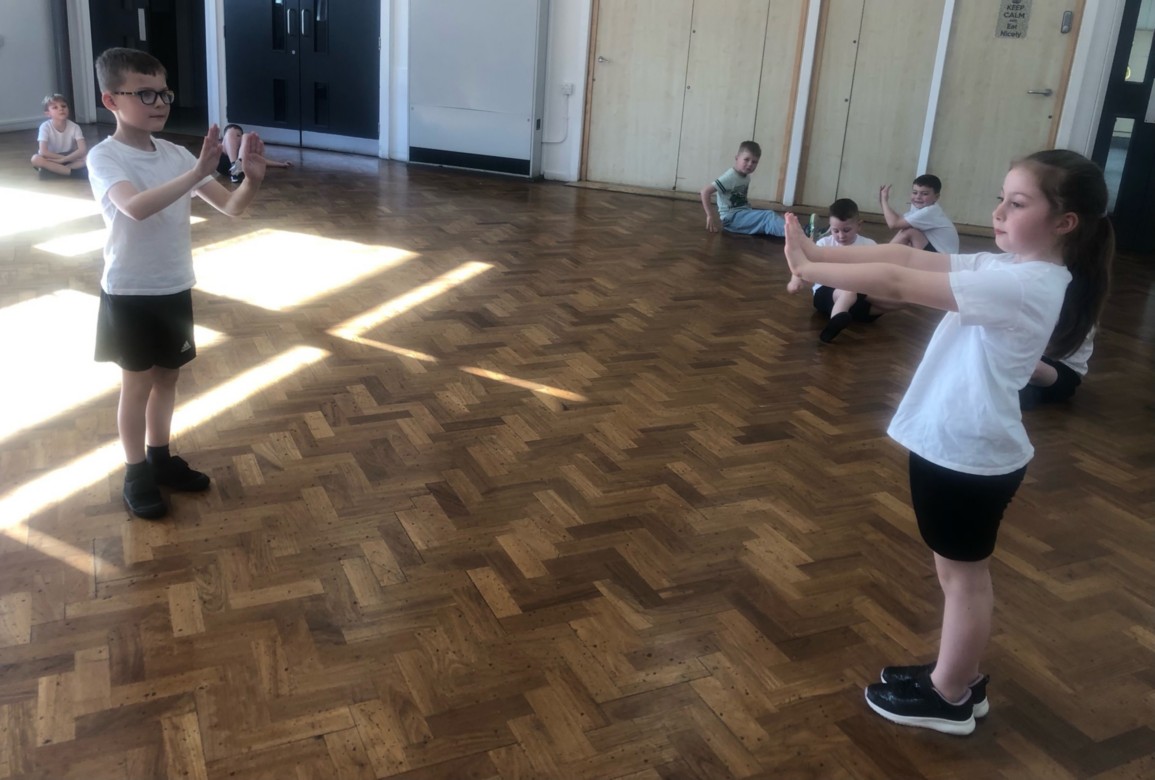



‘We enjoyed making a fishing game. We used magnets to fish with and we put paperclips on the fish.’
‘We found out about industrial magnets that are really big powerful magnets that are used to sort rubbish. They attract all the metal things, so they can be recycled.’
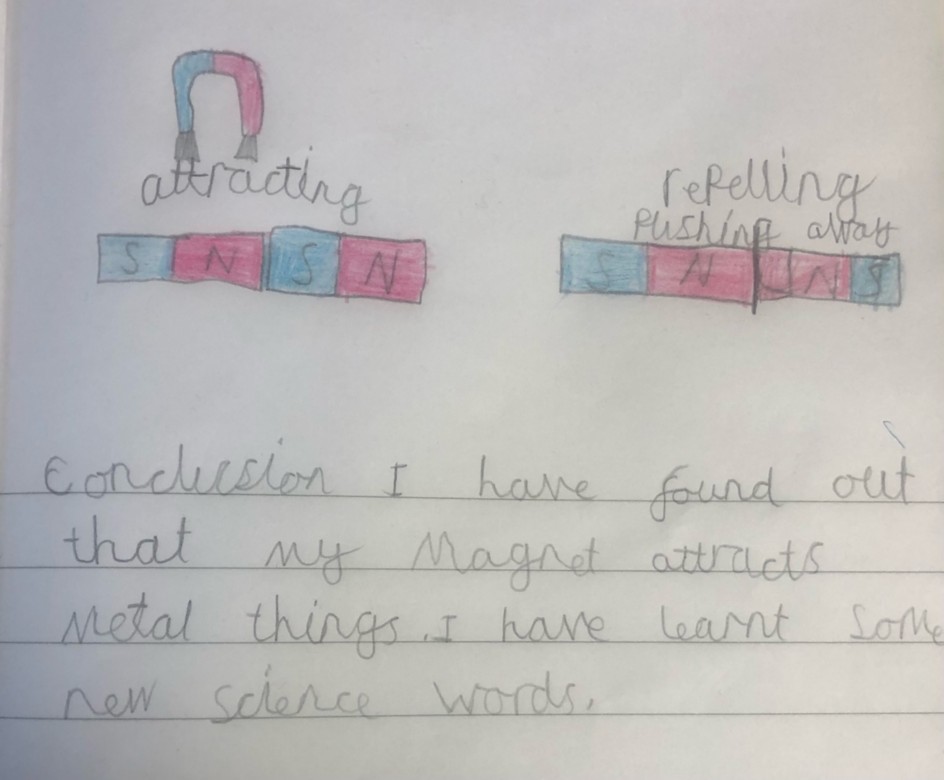
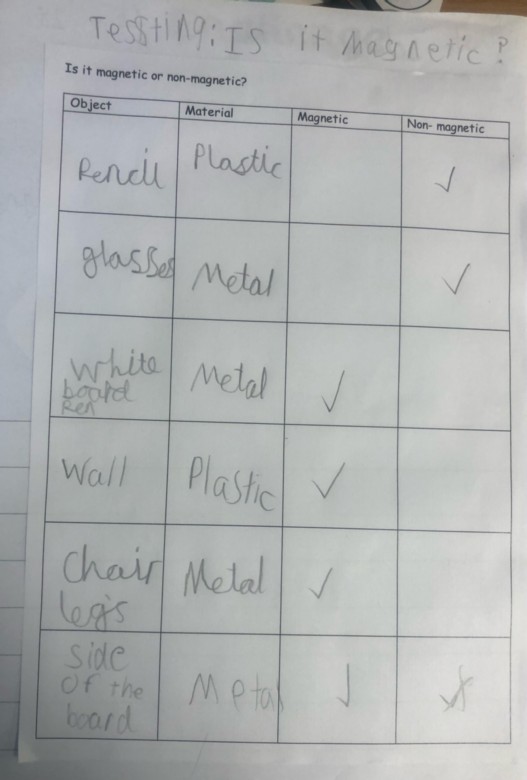
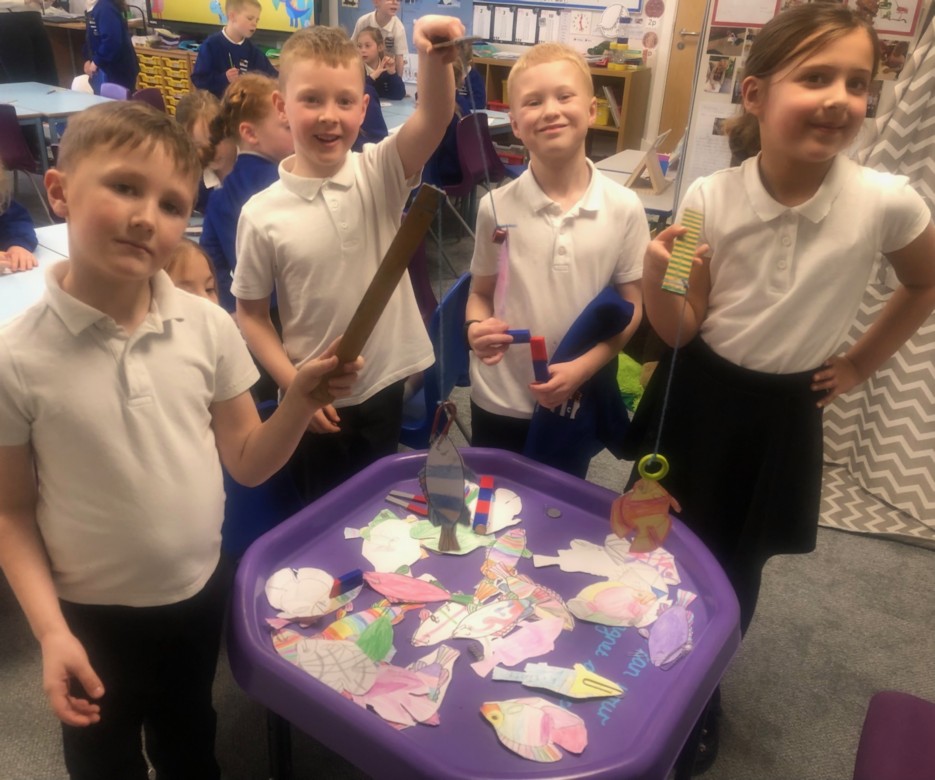
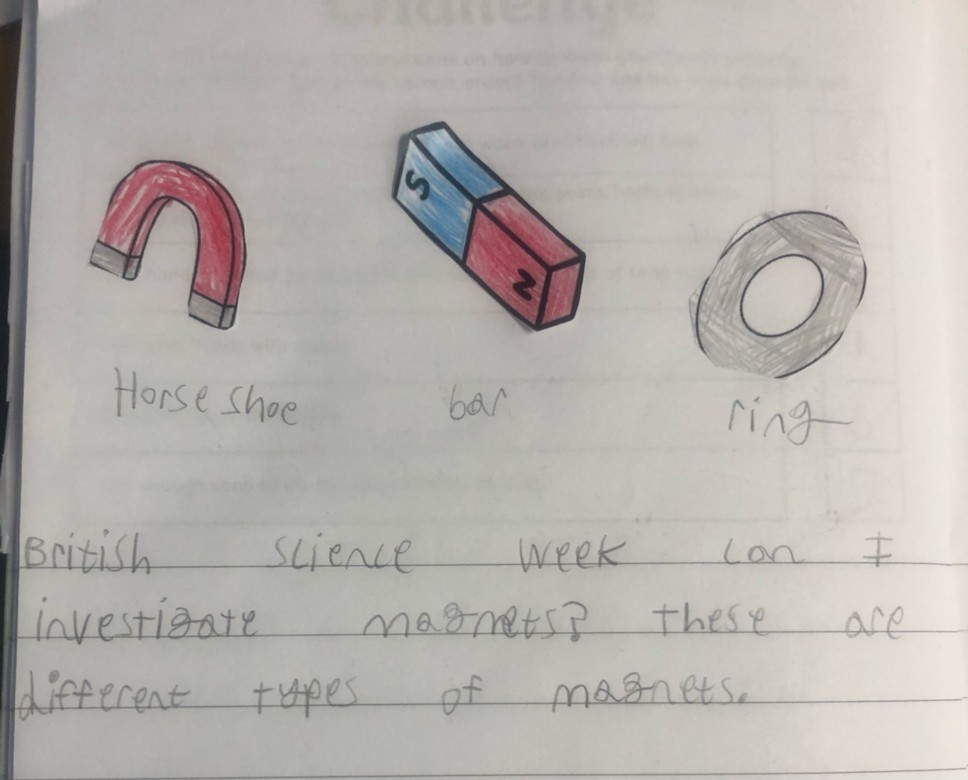
Year 3: Wormeries
As part of British Science Week we have been focusing on this year’s theme ‘change and adapt', which plays a big part in the scientific world. We linked this to our current Year 3 topic of plants. We learnt that worms can change waste into compost that can be nutrient rich for plants to grow. We had a go at making our own wormeries which are a smaller version of a compost bin. Luckily for us it had been raining earlier in the day so we seized the opportunity to try and find our own worms! We didn’t want to harm any worms, so for our wormery we used jelly worms.
“It was so fun jumping up and down to make the worms think it was raining again, we remember doing this at Elsham hall”
“When Miss Purshouse got the jelly worms out it made me laugh”
“I might try and make a wormery at home! Seeing how worms change waste is impressive”
Year 5
Year 5 have had a great science week. We investigated the effects of friction by testing the soles of different shoes on carpet. We also investigated the effects of air resistance by making, testing and adapting types of paper airplane. In English, we are also learning about the Mars rovers and designing our own rovers that could go to other planets.
Change and Adapt

As part of British Science week the theme this year was to Change and Adapt.’ To fit in with this theme we contacted Mrs Smith’s daughter who is a real life scientist and works in a laboratory. We asked her the big question of how she makes changes and adapts her work daily!
“It was great hearing from a scientist in real life”
“I loved seeing a lady scientist, because that’s what I want to be!”
“I thought it was really interesting!”
International Women’s Day

As part of international women’s day children in year 3 looked at Mary Anning who was a palaeontologist. She made lots of discoveries that changed scientific thinking but because she was a women she was treated as an outsider to the scientific community.
“She was one of the best fossil hunters of her time!”
“She got struck by lightening!”
“Only men were seen for the work they did and not women like Mary, which is really unfair”
Animal Hunt in the LibraryAnimal Hunt in the Library!
This week Year 1s have been on a visit to the library to find some books about wild animals. As part of our Science learning we are investigating land animals and Mrs Wink said we could borrow some books about them. Firstly we remembered all about what Non-Fiction books were and looked at where they are in the library. Next, we looked at and chose the books we were going to borrow. Finally we stamped our books so we knew when to return them. We are going to use these books to learn about mammals, reptiles, amphibians and birds. We told Mrs Wink why we chose each book:
Pupil A: I like this book about polar bears because they live where it is cold.
Pupil B: I chose this because it has different animals in it.
Pupil C: This one looks good because it has photos and writing about the photos.
We all said thank you to Mrs Wink.
Year 1s Visit The Deep
What a fantastic day we had today! Year 1s travelled over and under the Humber Bridge today (which was very exciting in itself!!) to get to The Deep. We have been exploring underwater animals and this trip gave us the opportunity to see the creatures we have been learning about. Children were thrilled to see jellyfish, sharks, swordfish, poisonous frogs, penguins and turtles. In the afternoon we enjoyed a workshop and learnt all about river turtles and how to keep them safe. We even got to make a turtle puppet to bring back to school. Have a look at our photos. This is what we thought of the trip:
Pupil 1: I loved the bubble lift because when we went up we could see the sharks.
Pupil 2: My favourite was the puffer fish.
Pupil 3: I liked it when we saw the divers go underwater and feed the fish.
Pupil 4: I liked watching the penguins because we saw them jumping in the water, swimming and doing rolly-pollys!
Reading for Information: Animal Facts
The Year 2 children really enjoyed their visit to Laceby Library to explore a wide variety of books all about animals.
‘Mrs. Wink showed us fiction and non-fiction books.’
‘I told everyone that I wanted to find out information about red pandas.’
‘It was exciting because we got to look at lots of books and take some books back to school with us.’
‘We shared our animal facts with the class. I learnt lots of facts about frogs.’
‘I think we are so lucky to have a library in Laceby. I like to go every week with my mum and read books.’
‘I know lots of new animal facts now which will help me in Science.’
Space
Year 5 have been learning about space this half term. As part of our learning we have completed research about the solar system and the broader universe. We enjoyed creating art inspired by space imagery on our hook day and have created presentations about the different planets. There will be more space-themed art next half-term as well.
Year 4 Being Scientists - Looking after your teeth
We have been learning about how we should care for our teeth, the names of the different types of teeth and their different purposes. We decided to investigate which drinks cause the most tooth decay by placing hard boiled eggs in different types of drinks and observing them over a period of time.


Exercise and Heart Rates
In Science, Year 6 planned and conducted an investigation to find out how exercise affected their heart rates💪🏼 They measured their resting heart rate, and then measured it again after taking part in some moderate and vigorous intensity exercise to see what different it had made to the heart rate. They also worked out their recovery rates! What a fun and interactive science lesson!
Wind Turbine

Thank you to Mr Kemp from Caistor Lions for visiting our school and donating the wind turbine model - lots of exciting STEM work planned. Watch this space! Caistor Lions also have donated funds for our enrichment clubs which we are really grateful for too - Mr Kemp enjoyed seeing the sewing and science work we have done! Well done everyone!


RSPB Birdwatch 2025
The Year 2 children enjoyed learning about UK birds, their needs, habitats and bird calls. They had a great time birdwatching in the school grounds. These keen twitchers kindly left lots of bird seed, fat balls and apples for the birds to enjoy!
We are geologists
Today in year 3 science we have been investigating rocks. We looked into how vinegar (an acid) would react with three different types of rocks; granite, marble and clay. We then investigated how water would react with the types of rocks. We were then able to make a conclusion from our investigation.
“It was exciting investigating!”
“We used words like permeable which means the rock would let water through them, and impermeable which means they don’t”



We are Science investigators
As part of our Electricity unit, Year 6 pupils have been investigating if different components affect the brightness of a bulb. Pupils planned their investigation, looking carefully at the variables and how to ensure to make it a fair test. Pupils then used different components to test the brightness of a bulb… great work Barley class!
Year 4 - The Water Cycle

In science we have been learning about how water constantly changes from solids, liquids and gases through the water cycle. to help the children understand about evaporation, condensation and precipitation we made it ‘rain in a bag’ by putting some water in a bag, sticking it to a window and watching it. Try it at home and see for yourself!
Magnetic Materials
Today in year 3 science we have been looking at which materials are magnetic, and whether a magnet would attract or repel them. We made predictions on each material and then tested them with our magnets to gain a result.
“I recalled that magnets have two sides, and now I know they are called the North and South Poles”
“One of the materials surprised me with the result because it repelled and I really thought it was going to attract the magnet”
“I loved using the magnets around school to see which materials were magnetic”
“If we made a hide and seek game for year 1 using magnetic materials, I would hide a paper clip for the magnet to pick up”
Year 4 Changes of State
The children had lots of fun learning about changes of state from solids to liquids to gases. We played a game where they pretended to be particles and they had to move to show the different states of matter.
Taster Session
Our New year 6 pupils went to Healing Academy this week to take part in a taster session with a Science theme! They had a great morning completing a range of Science based activities!
Georgia O’Keeffe
In art this week we created our own Georgia O’Keeffe inspired abstract drawings.
In a framed section, we sketched what we could see, including the lines and outlines of shapes into one of the rectangles. We then chose one composition to draw as a final piece on a larger scale. This linked to work we had already completed in science linking to plants, so we could already scientifically name the different parts we were drawing.
“I used oil pastels to shade my art work in”
“I chose to draw the leaf”
“I liked looking at all the different flowers that people have grown for our school to look nice”
Anglian Water
Year 3 and 4 had a great morning with Anglian Water. We met with Richard and Caroline who talked us through the work they do from making the water clean to how we can be more water efficient.
Caroline did a filtration experiment with us like Anglian water do to clean their water and explained the process from the screening, to coagulation and air flotation just to name a few.
"I will definitely be telling my family to be more water efficient"
"My favourite fact was that we can waste a bucket and a half from just letting the tap run when we brush our teeth."
Learning Share
This morning, we had our learning share. We had different activities set up all linking to different parts of our curriculum. We had to label a skeleton, find artefacts and label European countries with their flags just to name a few. Pumpkin class and staff would like to thank everyone who came to our event today!
"Lovely morning, especially the wonderful singing"
"Brilliant, really enjoyed seeing what the children do in school"
"The children seem to really enjoy this year, well done Miss Purshouse"
"It is so lovely to come into school and have the opportunity to see the children's learning"
Investigating Refraction
Today, in year 6, we were being scientists 🧑🔬 We have been investigating refraction and how light changes direction when travelling through different mediums. We worked in teams to predict, investigate and observe the effects of refraction by viewing images through a glass of water. We noticed that the image flipped upside down or even completely disappeared!
Year 1 Plant Life Cycles
This week Year 1s have begun their plant studies in Science by reading a story called ‘The Tiny Seed’.
The story gave us information about the growth and re-growth of a sunflower. We have been making our own life-cycle pictures by sequencing real photos of sunflowers. Next week we will be planting our own and helping them to grow.
Child 1: The story goes round and round and round again.
Child 2: I liked when we pretended to be a seed floating in the air and then growing in the ground.
Child 3: I think it’s sad that the sunflower goes droopy and dies. But the seeds live on so it’s happy.
Child 4: I worked with my partner as a team to get the cycle right.
Body Parts
As part of our science learning this term Year 1s have been learning about different parts of the body.
We had fun labelling our friends!
Pupil 1: It was so funny sticking labels on our friends!
Pupil 2: I learnt what elbows do
Pupil 3: We had to write and read the labels too




Daisy Class Science Experience
This week Daisy class enjoyed a VR activity. This involved using headsets to experience the virtual reality of the scientific world. We learnt about global warming and climate change. Back in class children were able to talk about how they would contribute towards saving the planet. These are some of our ideas:
Pupil 1: scooting to school instead of using the car.
Pupil 2: recycling our plastic waste.
Pupil 3: having a shower instead of a bath.




Yorkshire Wildlife Park
As part of the learning this term in year 4, we have focused on the rainforests of the world and the biodiversity found there. To enrich the classroom learning in this topic, we took a trip to the Yorkshire Wildlife Park. While there, we had an excellent education session, that consolidated our knowledge about the layers of the rainforest and we even got to handle some creatures. After a rainy start, the weather cleared and we toured the park, trying to spot animals that we might see in the rainforest, as well as other habitats. Around the park there was lots of information about where the animals came from, what their type of diet was and if they are endangered, linking to our work on habitats, food chains and conservation.
Science Week
Buttercup Class
We have been exploring how creatures can camouflage themselves for protection or to sneak up on their prey.
We mixed paint to make crocodile colours
We printed using different things to make the texture of the crocodile’s skin.
We used different materials to create habitats for crocodiles.
We enjoyed looking at photos trying to spot the camouflaged animals.
Sunflower Eco Warriors!
The Sunflowers really enjoyed an amazing Virtual Reality workshop led by Carys Jones from the Education Group. They virtually visited the planet Earth and were guided by the expert droid Glido and his friends. Glido brought to their attention the important topic of climate change. The children discussed real-life issues such as pollution, over-fishing, agriculture and plastic waste.


‘Disappearing Dinos’
The Year 2 children got involved in some debating and research about the extinction of dinosaurs. Before they looked in books and went on the internet, they discussed their own scientific theories about what they thought had happened to the dinosaurs long ago.
J- I think that the dinosaurs are extinct because there was a meteorite, exploding volcanoes, a sand storm and a flood. I think it was so powerful that it killed all the dinosaurs.
N- I think an asteroid hit the Earth and that killed them.
B- Maybe they all got eaten by cave men who killed them.
N- I found out that there was an ice age and I think the cold conditions would’ve been too hard for the dinosaurs to survive.
Year 3
For Science week pumpkin class have had a go at making their own biodegradable plastic. This experiment linked with science week the theme of 'time' but also our English book 'One Plastic Bag. We learnt that plastic takes many years to decompose; causing land pollution. Therefore, biodegradable bags are more environmentally friendly, reducing pollution.



Pumpkin class had a great time during the VR workshop. We got to see how global warming is changing the world and what we can do to become more environmentally friendly. We followed this workshop up by creating our own ECO manifestos of what we will do to help the environment.
"I wrote about walking to school more and reducing by carbon footprint"
"The VR headsets were SO cool!"
"It was so fun!"
"In my manifesto I am going to stop asking my mum to buy be clothes to reduce the production of fast fashion"



Year 4
During science week, each class got to experience a fantastic immersive VR experience. The children got to travel without having to leave the room, through the magic of the headset. The VR experience was about conservation and caring for our planet. We continued our learning about this as we went back to the classroom and researched endangered animals.
Year 5
This year's Science week focus was 'time'. In the classroom we learnt all about pendulums. We learnt about why pendulums are used and where we might see examples of pendulums in everyday life. We then made our very own pendulums and investigated how we could change the speed of the movement. We were also very lucky to participate in a VR headset session. The children discovered different ways that they could reduce their carbon footprint and saw the impacts of climate change.
Year 6
Barley class had a wonderful experience at our VR workshop, learning all about the environment !! We got to see how global warming is changing the world and what we can do to become more environmentally friendly.
Virtual Reality Workshop
We were so lucky to experience VR glasses to go on an adventure looking at our planet. We shared what we thought of this experience.
C “liked the robots telling us about rubbish and packaging.”
R “I saw the Earth and the robots called it a planet.”
N “I saw the whole planet. I saw everything. It looked amazing.”
FD “There was a speed car. It was electric.”
M “The robots showed different parts of the world.”
T “The robot’s hands were so realistic.”
MC “They showed us how rubbish was in the deep sea.”
M “The coral has changed colour and died”


Science Field Trip
This week Year 1 visited The Deep as part of their science learning about animals.
The children had an amazing time using their Geography skills on the way, spotting landmarks and got very excited as we crossed The Humber Bridge!
Once in The Deep we explored different animals and used our categorising skills to find mammals, fish, birds and amphibians.
We also learnt from a teacher their about the differences between sea turtles and river turtles.
Take a look at our photos.
Children shared their learning with these comments:
Pupil 1: I loved the swordfish best of all, we got see underneath it as it swam past us in the bubble lift.
Pupil 2: I liked helping out with the turtle story.
Pupil 3: I liked the teeny, weeny jellyfish; they were just so small!
Pupil 4: My favourite were the penguins because one dived into the water.
Pupil 5: I’ve learnt about the claws on the river turtle and I liked making my turtle too.
Pumpkin Class Plant Trees
Today Paul from NELC came to school to help us plant 4 new apple trees.
The project was launched by NELC to help increase the canopy cover across our borough, which is currently one of the lowest in the country.
Paul talked us through each step of planting a tree which links to our science topic of planting. We hope one day we can use the produce off these trees in our cooking club to help us towards being more sustainable.
What makes a bed Comfy? Science Investigation
We agreed that a good bed should be soft and comfortable and keep us warm
We explored a range of materials to try and find the best materials. We discussed the different textures and feel of a range of materials eg soft, squishy, bumpy, fluffy, scratchy, hard, cold, snuggly.











Outside we used materials to make a bed. It was not comfortable. It was hard, cold and the sack was scratchy and rough.
PX Ltd visit
In Year 5 we have been completing different investigations to help the engineers at PX Ltd in Hull with the 'Children Challenging Industry' programme. On the last day of half term, we were lucky enough to be invited over to visit the site. The children thoroughly enjoyed the activities in the morning, these included: wearing PPE, using an inferred thermometer and a tour around the Saltend chemicals park.
OB 'This is a once in a lifetime opportunity, we are so lucky to be able to do this.'
LS 'I want to work in an industry like this.'
FG 'I have really enjoyed taking up the role as PPE safety manager, making sure they are all wearing the correct PPE to keep them safe around the site.'
Science Investigation- Soil Permeability
Today in Pumpkin class we have been scientists. We identifed how to make careful observations and observed how much water had filtered through different types of soil. We made sure we used the same equipment and length of time for each observation to make our investigation a fair one. We also found that we were using skills from other lessons, such as maths for reading the units of measurement and time. The conclusion to our investigation was that the soil from our tyre plants was the most permeable.




People that help us – Nurses
This afternoon we had a special visitor, Mrs Hurdman who told us all about her job working at the hospital as a Student Nurse. We all had a go at using a stethoscope and listened to each other’s hearts. We learnt that it is a busy job looking after people and helping them get well. Lots of us want to be a nurse or Doctor when we are grown up.



Children Challenging Industry - Pastillator 🧫 🧪
Barley class continued their investigations into lanolin this week, as part of the Challenging Industry project. They had a challenge from Croda to investigate pastilles using different liquids and materials. The pastilles had to be of the same size and pupils worked within their teams to see if varying the liquid, changing the surface the liquid landed on or varying the tools in which they made the pastilles made a difference to the pastille formation and speed in which these could be made! Great scientific work!
Children Challenging Industry
Our Year 6 pupils are taking part in a fantastic programme ,with York University, which aims to give the opportunity of children learning about science and industry. The programme combines classroom science lessons led by expert advisory teachers, with visits to industry, tailored to meet the needs of the science curriculum.
In the first session this week, pupils worked together to complete an investigation on substances that needed separating. Our next session will be looking at particles. These investigations link with our industry visit to Croda at the end of the month!
Rocks
In Science we have started our new topic learning all about rocks. We looked at what different rocks there are; Igneous, Sedimentary, and Metamorphic Rocks. We compared the different types of rocks with the help of some sweets!
"Using sweets helped me understand the different types of rocks more"
"Making the sedimentary rock was my favourite because my hands got sticky"
"I know now that concrete is man made, I didn't know that"
